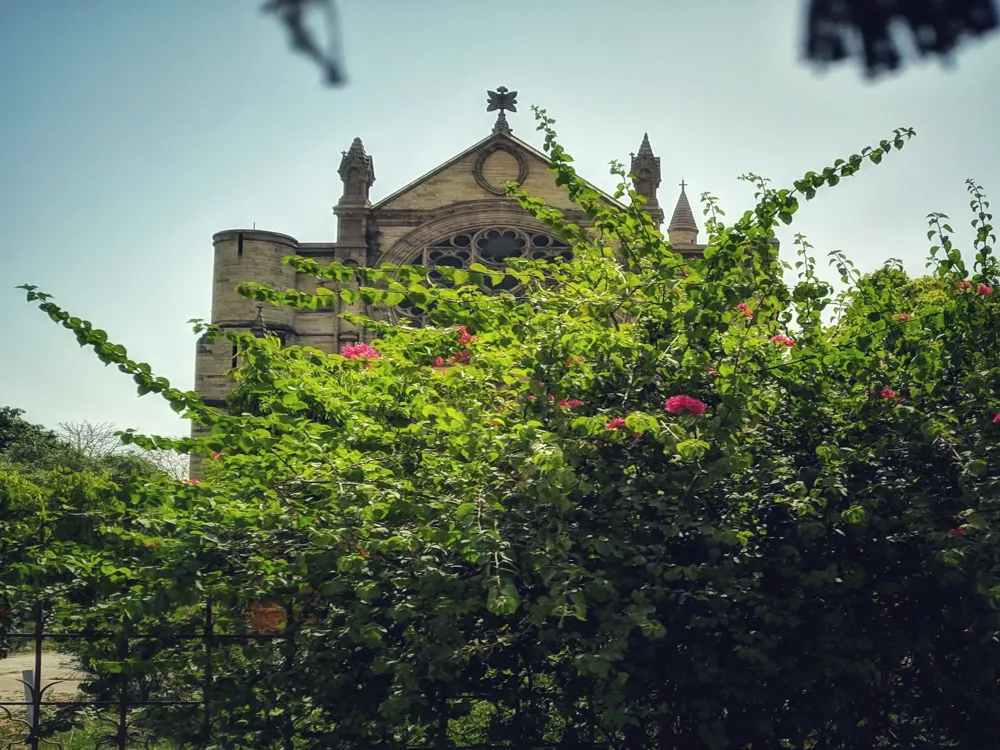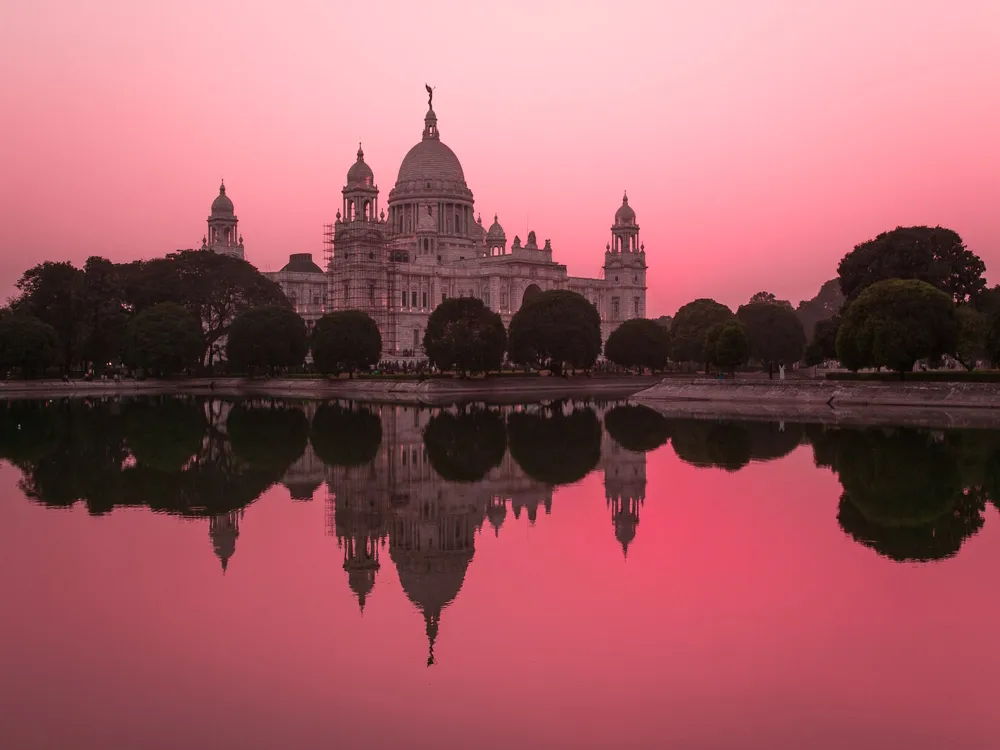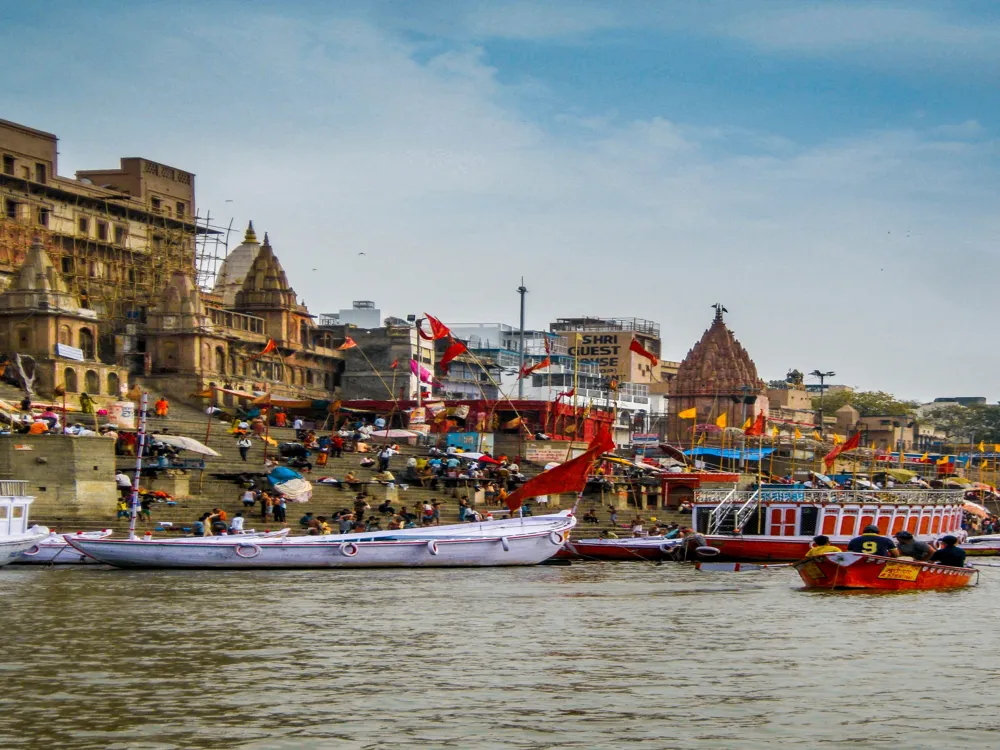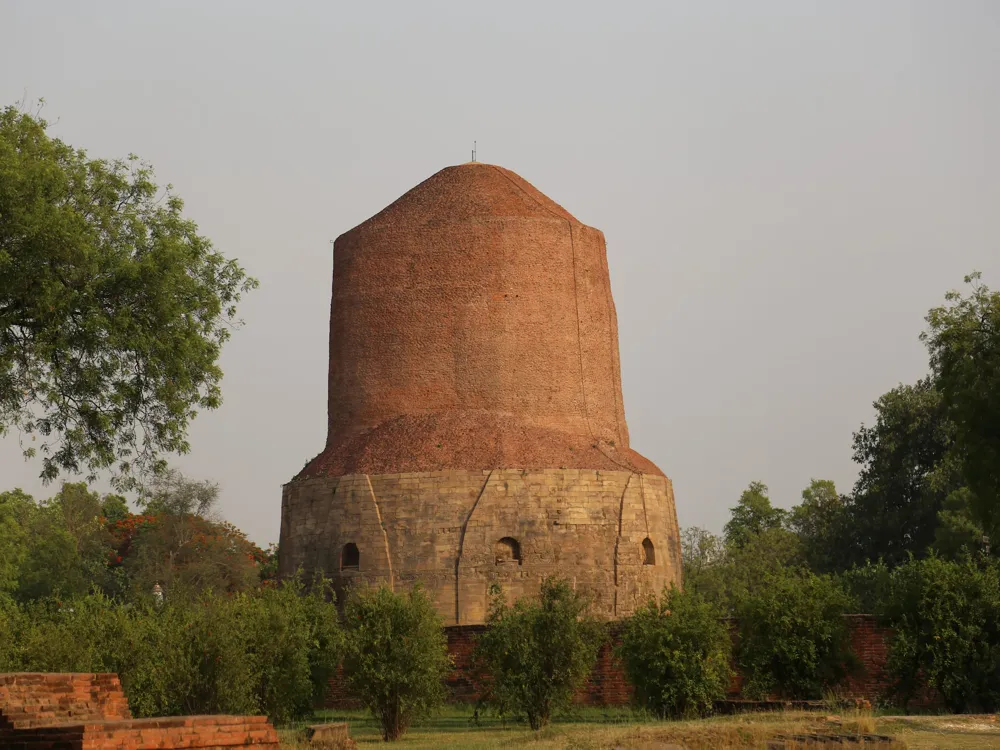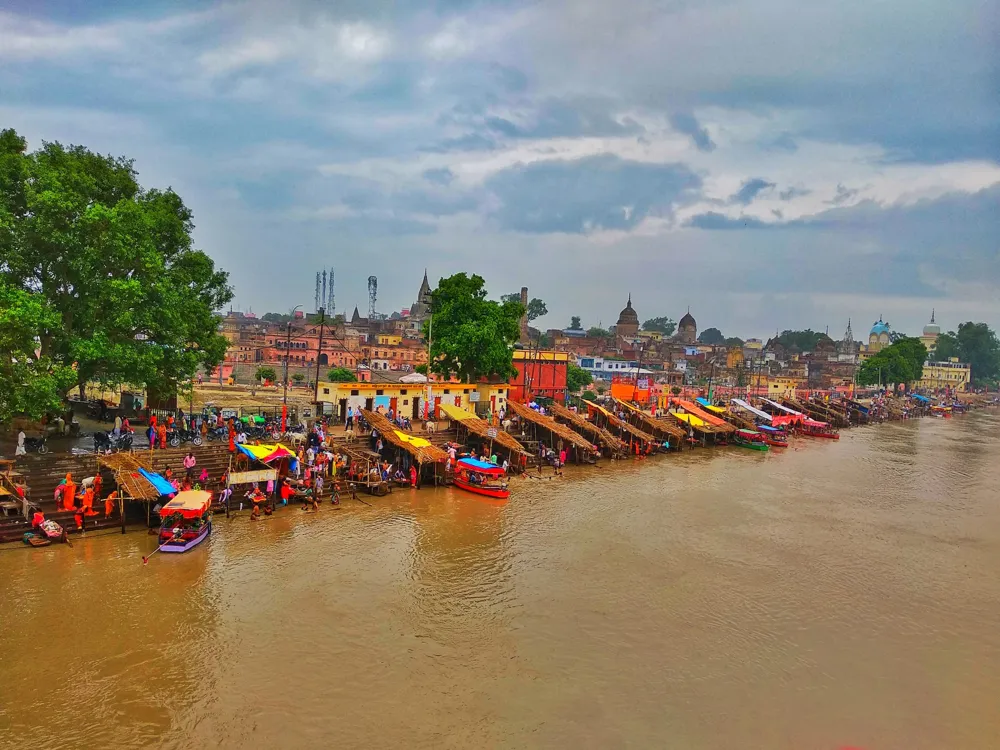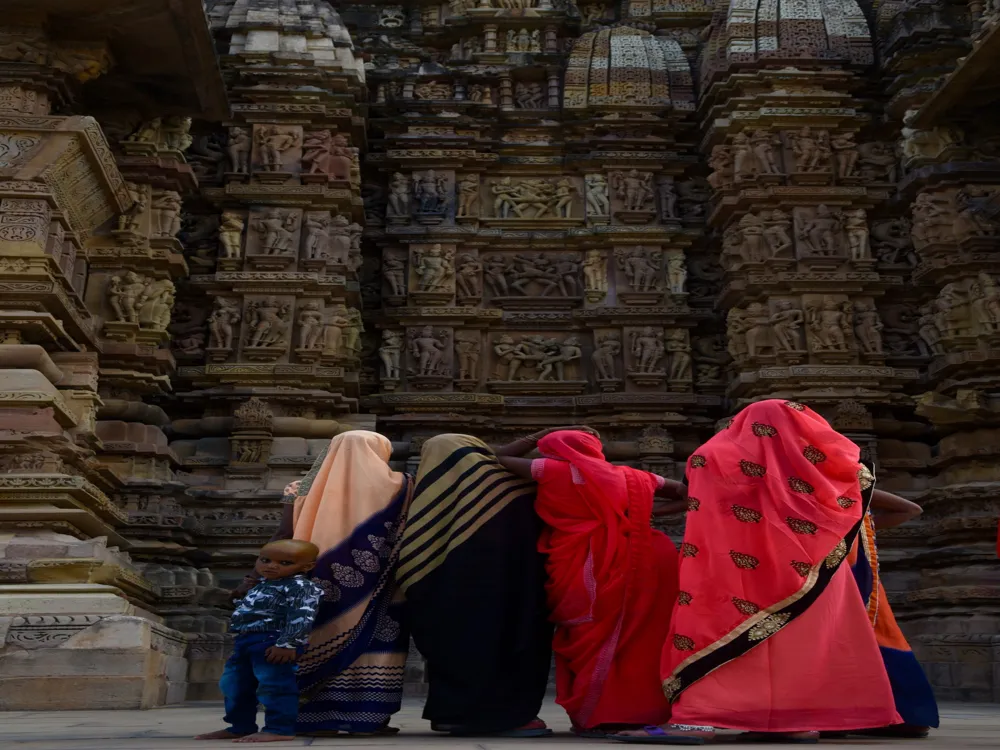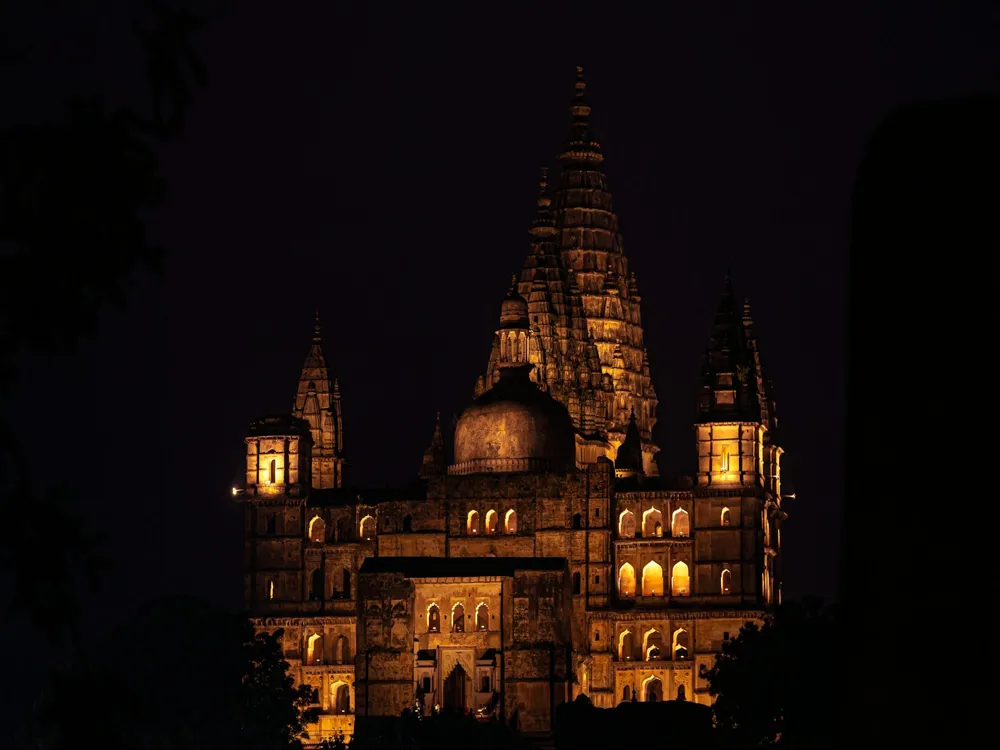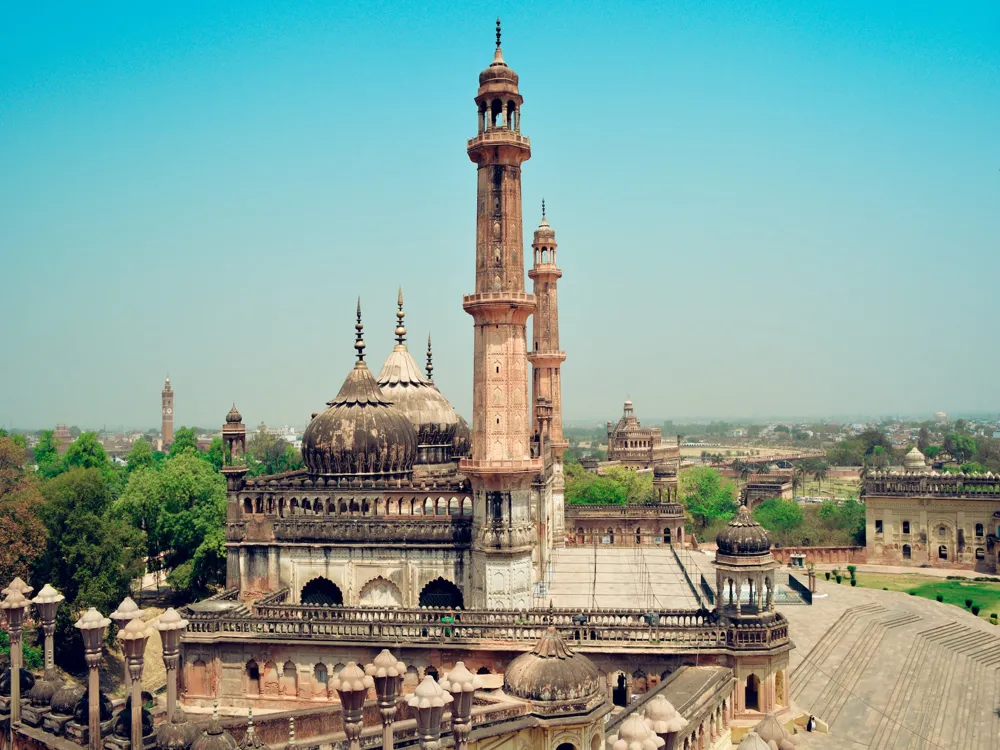The Hanuman Mandir in Allahabad, Uttar Pradesh, is a beacon of spiritual fervor and architectural splendor. This temple, dedicated to Lord Hanuman, stands as a testament to the deep-rooted religious traditions and cultural heritage of India. Located near the holy confluence of the Ganges, Yamuna, and mythical Saraswati rivers, known as Triveni Sangam, the temple has been a significant pilgrimage site for centuries. The deity of Hanuman here is unique, as it is the only temple where Hanuman is seen in a reclining posture, which signifies his devotion and readiness to leap into action to serve Lord Rama. The temple's history is intertwined with the epic tales of the Ramayana and attracts devotees from all over the world. Beyond its religious significance, the Hanuman Mandir is also renowned for its exceptional celebration of festivals, particularly during Dussehra and Hanuman Jayanti. These festivals see the temple and its surroundings come alive with vibrant rituals, chants, and an atmosphere imbued with devotion. The temple serves not just as a place of worship but also as a cultural hub, representing the diverse and rich tapestry of Indian traditions. The architecture of Hanuman Mandir in Allahabad is a splendid example of ancient Indian temple architecture blended with local influences. The structure showcases intricate carvings, ornate designs, and an imposing façade that captures the essence of Hindu temple design principles. The temple's architecture is characterized by its high dome, which is a signature of North Indian temple architecture, and the beautifully carved pillars that support it. The dome is adorned with motifs and sculptures that depict scenes from Hindu mythology, particularly the Ramayana, adding to the temple's narrative charm. One of the most striking features of the temple is the idol of Lord Hanuman. Carved out of a single piece of stone, this idol is remarkable for its size and the detailed craftsmanship. The temple complex also includes smaller shrines dedicated to other deities, adding to its spiritual aura. The use of local sandstone in the construction of the temple not only gives it a distinctive appearance but also reflects the ingenuity of the craftsmen who built it centuries ago. This architectural marvel has withstood the test of time and continues to be a source of inspiration and devotion. The best time to visit Hanuman Mandir is during the cooler months from October to March. The weather is pleasant, which makes exploring the temple and its surroundings more comfortable. Additionally, visiting during the festival seasons, especially during Hanuman Jayanti and Dussehra, offers a unique experience with special rituals and cultural festivities. Visitors are advised to dress modestly when visiting the temple. Traditional Indian attire is preferred, but not mandatory. It is also important to maintain the sanctity of the temple by avoiding loud conversations and ensuring mobile phones are either switched off or on silent mode. Photography may be restricted in certain areas of the temple. It is advisable to check with the temple authorities beforehand and respect any rules regarding photography to avoid disrupting the sanctity of the place. Hanuman Mandir in Allahabad is well-connected and easily accessible. The nearest airport is Allahabad Airport, from where one can hire a taxi or take public transport to the temple. For those traveling by train, Allahabad Junction is the main railway station, and the temple is a short drive from there. Local buses and auto-rickshaws are also available for convenient travel within the city. Read More: Overview of Hanuman Mandir, Allahabad
Architecture of Hanuman Mandir
Tips When Visiting Hanuman Mandir
Best Time to Visit
Dress Code and Etiquette
Photography Rules
How To Reach Hanuman Mandir
Hanuman Mandir
Allahabad
Uttar Pradesh
NaN onwards
View allahabad Packages
Weather :
Tags : Temple
Timings : 5:00 AM - 2:00 PM
5:00 PM - 8:00 PM
Entry Fee : Free
Planning a Trip? Ask Your Question
Allahabad Travel Packages
View All Packages For Allahabad
Top Hotel Collections for Allahabad

Private Pool

Luxury Hotels

5-Star Hotels

Pet Friendly
Top Hotels Near Allahabad
Other Top Ranking Places In Allahabad
View All Places To Visit In allahabad
Faq on Allahabad
Where is Hanuman Mandir located in Allahabad?
Hanuman Mandir is located in Allahabad, Uttar Pradesh, India. It is situated near the Sangam, the confluence of the Ganges, Yamuna, and Saraswati rivers.
What is the significance of Hanuman Mandir in Allahabad?
Hanuman Mandir is a revered Hindu temple dedicated to Lord Hanuman, the monkey god known for his devotion, strength, and loyalty. It holds immense religious significance for devotees who seek blessings and protection from Lord Hanuman.
What are the timings of Hanuman Mandir in Allahabad?
The temple is usually open for devotees from early morning till late evening. However, specific timings may vary, so it's advisable to check with the temple authorities for the current schedule.
Is there any special puja or ritual performed at Hanuman Mandir?
Yes, various pujas and rituals are performed at Hanuman Mandir, including Hanuman Chalisa recitations, aarti ceremonies, and special offerings to Lord Hanuman. Devotees often participate in these rituals to seek blessings and fulfillment of their wishes.
Is there any particular dress code to be followed while visiting Hanuman Mandir?
While there might not be a strict dress code, it's advisable to dress modestly and respectfully while visiting any religious site. Devotees often wear traditional attire while visiting the temple out of reverence for the deity.
View allahabad Packages
Weather :
Tags : Temple
Timings : 5:00 AM - 2:00 PM
5:00 PM - 8:00 PM
Entry Fee : Free
Planning a Trip? Ask Your Question
Allahabad Travel Packages
View All Packages For Allahabad
Top Hotel Collections for Allahabad

Private Pool

Luxury Hotels

5-Star Hotels

Pet Friendly
Top Hotels Near Allahabad
Other Top Ranking Places In Allahabad
Faq on Allahabad
Where is Hanuman Mandir located in Allahabad?
Hanuman Mandir is located in Allahabad, Uttar Pradesh, India. It is situated near the Sangam, the confluence of the Ganges, Yamuna, and Saraswati rivers.
What is the significance of Hanuman Mandir in Allahabad?
Hanuman Mandir is a revered Hindu temple dedicated to Lord Hanuman, the monkey god known for his devotion, strength, and loyalty. It holds immense religious significance for devotees who seek blessings and protection from Lord Hanuman.
What are the timings of Hanuman Mandir in Allahabad?
The temple is usually open for devotees from early morning till late evening. However, specific timings may vary, so it's advisable to check with the temple authorities for the current schedule.
Is there any special puja or ritual performed at Hanuman Mandir?
Yes, various pujas and rituals are performed at Hanuman Mandir, including Hanuman Chalisa recitations, aarti ceremonies, and special offerings to Lord Hanuman. Devotees often participate in these rituals to seek blessings and fulfillment of their wishes.
Is there any particular dress code to be followed while visiting Hanuman Mandir?
While there might not be a strict dress code, it's advisable to dress modestly and respectfully while visiting any religious site. Devotees often wear traditional attire while visiting the temple out of reverence for the deity.








